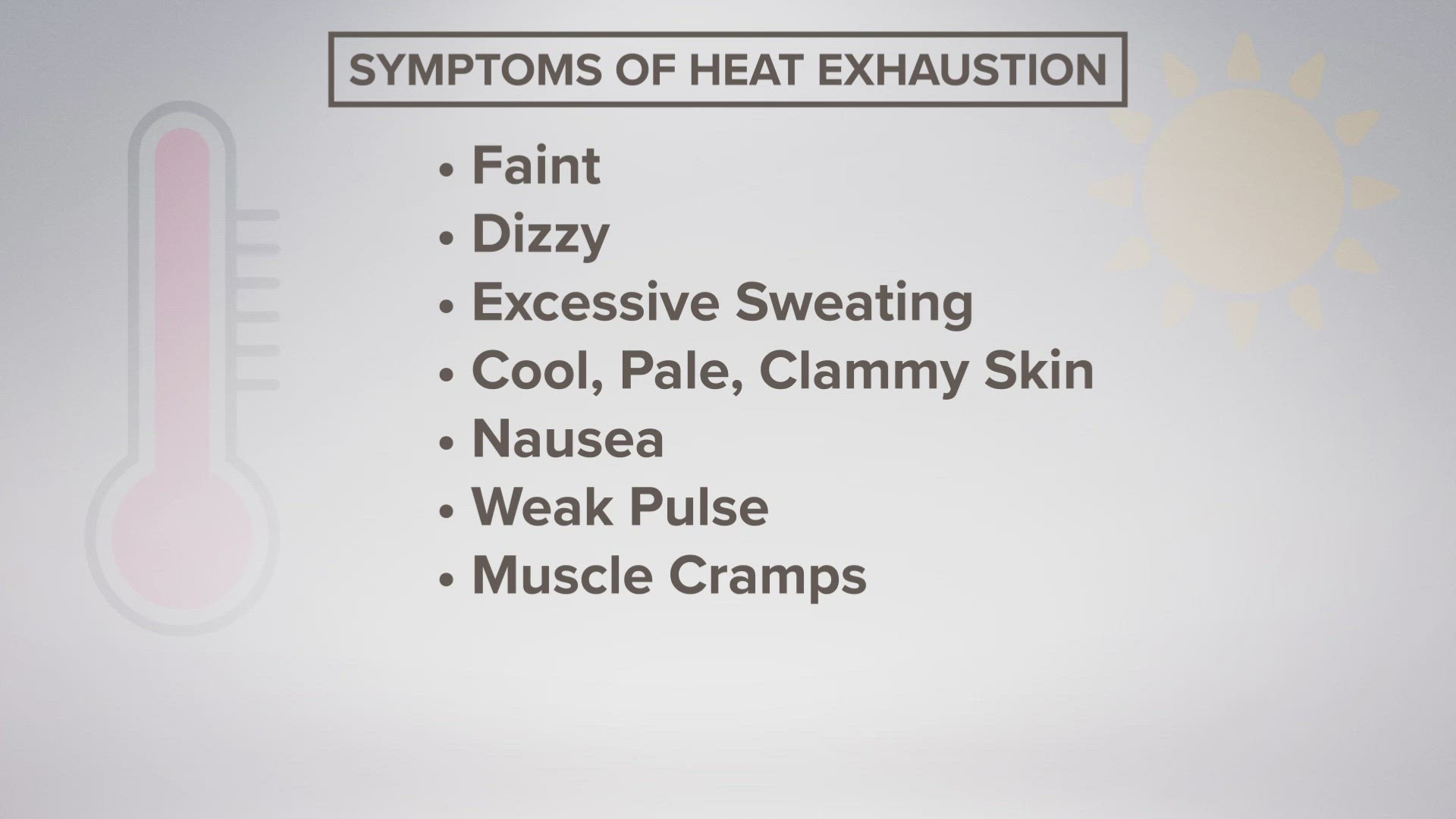MEMPHIS, Texas — The summer heat is here, making the risk of heat exhaustion and heat stroke higher. Knowing the symptoms of both heat exhaustion and heat stroke allows you to be informed on the best ways to respond in case of an emergency, helping you protect yourself and the ones you love.
Some symptoms of heat exhaustion include dizziness, excessive sweating, pale/clammy skin, vomiting, rapid or weak pulse, and muscle cramps. If you experience any of these symptoms, make sure you get to a cooler place with air conditioning, drink water if you’re conscious, and take cold showers.
Heat stoke is more serious than heat exhaustion, mainly because having a stroke caused by heat likely prevents you from nursing or caring for yourself. A heat stroke requires an immediate response.
Symptoms of a heat stroke include headaches or confusion, inability to sweat, body temperature above 103, vomiting, rapid or strong pulse, and loss of consciousness. If someone experiences a heat stroke, start by calling 911. Then move to a cooler place, cool yourself using cloths, and don’t drink any fluids as you wait for help to come.
To reduce the chances of heat exhaustion or heat stroke, stay hydrated and never leave children, seniors or pets in locked vehicles during high heat days, not even for a few minutes.

